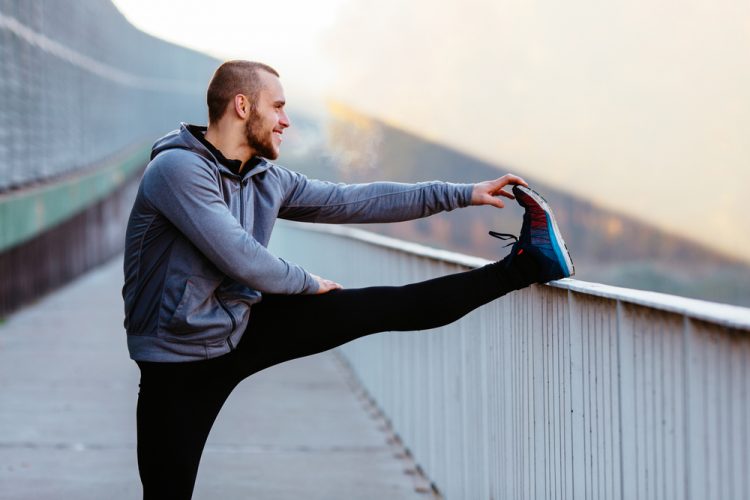By: Tayler Glenn
Warm-ups are important for preparing your muscles and helping to minimize your risk of injury. One of the most common mistakes made by beginners is skipping the warm-up. It’s not surprising since new ideas that conflict with older notions make it hard to know the difference between stretches and what you should be doing. Instead of ditching your warm-up entirely, let’s break it down a bit and see what really works.
When you’re gearing up for any type of vigorous activity – whether it be running, lifting or team sports – you need to take time to prepare your body and muscles for what’s coming. The debate comes down to which type of stretching is best: dynamic or static?
What’s the Difference?
Static:
Static stretches are “still stretches”, or the kind that involves holding a position that is slightly uncomfortable for about 30 seconds. Think of the flexibility test in gym class where you had to see how far past your toes your fingertips could reach! This type of stretch is meant to gradually elongate the muscle, making it less susceptible to strains and tears.
Dynamic:
In dynamic stretching, the focus is on repeatedly moving your joints and muscles through a full range of motion. These movements are smooth, deliberate, and usually similar to the type of exercise you expect to be performing during your workout. These types of stretches are going to look more like what you see football players doing on the field before practices including movements such as bodyweight lunges with torso twists, dino kicks, and high-knees.
When Should You Perform Which?
When we say warming up is important, we do mean warming up the right way. In this case, we mean dynamic stretching. Older ideas of pre-workout stretches did emphasize static stretches, and that is where many people are confused. That is, after all, what you’ve been taught to do! Recent studies, however, have shown that static stretching before a workout can actually hinder performance. That’s because it relaxes muscles, reducing strength and blood flow while decreasing central nervous system activity.[1] Static stretching is great for post-workout relief and recovery, though, once your muscles are warm and loose.
Dynamic stretches do the opposite! By moving your body through a full range of motions, you elevate your heart rate and increase body temperature. This allows your muscles to move more efficiently and wakes up your nervous system which gets your brain talking to your muscles![2] Still not convinced? A meta-analysis of 32 studies showed that this type of more active warming up before engaging in sports yields improved performance by 79 percent!
3 Dynamic Stretches You Can Do
Torso Twists
- Stand with your feet shoulder-width apart and keep your knees slightly bent.
- Keeping good posture (straight back, not arched or hunched), raise your arms parallel to your shoulders and bend at the elbows like you’re sitting in a large armchair
- Pivot on the ball of your right foot as you rotate left, continuing to turn your torso to the left until you feel a slight stretch
- Come back to center
- Pivot on the ball of your left foot as you rotate right, continuing to turn your torso to the right until you feel a slight stretch
- Repeat
Lunge
- Stand tall with your feet hip-width apart
- Keeping good posture (chest up, shoulders back, core tight, straight back) take a large step forward with your right foot.
- Lower your body until your front thigh is parallel to the ground and your knees are bent 90 degrees. (Your knee should not touch the ground)
- Pause, and then come back to center.
- Repeat with alternate leg.
Knee Circles
- Stand on one leg
- Raise the opposite knee to 90 degrees.
- Keeping your knee raised, open your hip and make wide circles in the air with your knee.
- Continue for 30 seconds.
- Switch and repeat.
Do you have any tips for warming up? Share them in the comments!
Resources:
1. Effects of warming-up on physical performance: a systematic review with meta-analysis.
https://www.ncbi.nlm.nih.gov/pubmed/19996770
2. Effects of passive stretching on post-activation potentiation and fiber conduction velocity of biceps brachii muscle
https://www.researchgate.net/publication/226578618_Effects_of_passive_stretching_on_post-activation_potentiation_and_fibre_conduction_velocity_of_biceps_brachii_muscle





Comments (2)